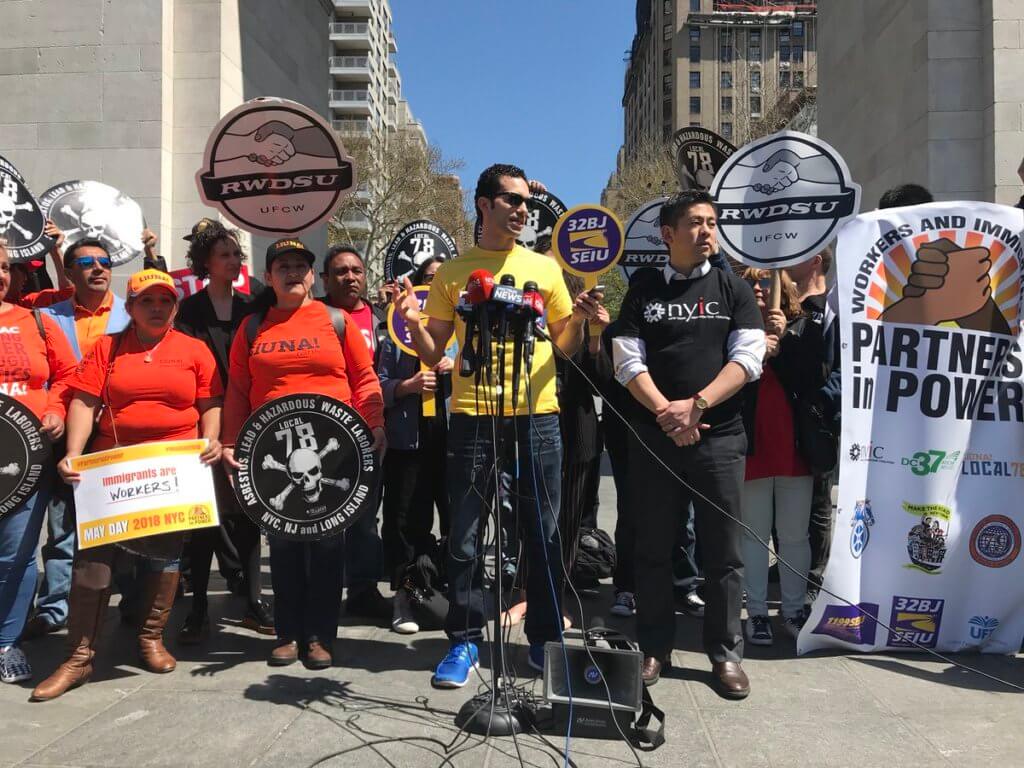Rallies organized in several U.S. cities on May 1 came down heavily on the Trump administration’s crackdown on immigrants, along with the traditional May Day themes of protecting worker rights, Reuters reported. The marchers, although less in number than last year when Trump first took office, ranged from organized labor unions to other activists.
The biggest march was held in Los Angeles, where activists were seen carrying pro-union and pro-immigration banners and chanting slogans such as “Union power” and “This is what democracy looks like.” The protesters also asked for more voters to show up at the mid-term Congressional elections in November.
“No rain, no clouds, no hate, no division is going to keep workers from celebrating with immigrants, with refugees … with the LGBT community, with the criminal justice reform community, with the environmental justice community,” Union leader Laphonza Butler, who heads the Service Employees International Union Local 2015, said to the crowd, according to reports. Butler’s organization heads around 380,000 long-term healthcare workers statewide and is one of the largest collective bargaining units in the nation.
Several hundreds activists in New York City marched from Broadway to Wall Street, Patch reported. They were led by Bushwick-based nonprofit, Make the Road New York. The morning marches were aimed at protesting against the complicity of major financial institutions in the “mass incarceration and family separation being advanced by the Trump Administration,” the event organizers announced on Facebook.
“The struggles for immigrant rights and worker rights are inextricably joined together, which is why we must stand arm-in-arm at the frontlines for justice. Today we speak as one voice to call on fellow voters to elect representatives that will protect and uplift all New Yorkers,” Steven Choi, executive director of the New York Immigration Coalition, said in a statement.
Marches taken out in the evening by coalition of immigrant rights groups brought attention to the administration’s policies that are “hostile to the environment, racial and ethnic minorities, women and to members of the lesbian, gay, bisexual and transgender community.”
May Day marches across American cities were peaceful, save for one arrest in Seattle. The common theme was the Trump administration’s policies. Its decision to end temporary protected status for thousands of immigrants from several countries hurt by natural disasters or conflict, such as Nepal, Nicaragua, Haiti, El Salvador and Sudan, over the recent months was criticized.
Protesters also talked about the status of an estimated 700,000 young immigrants who were brought to the United States illegally as children and are now facing possible deportation after the scrapping of the Obama-era program, Deferred Action Childhood Arrival, that protected them. The protesters said that the administration’s policies were hard on undocumented workers in low wage, non-unionized sectors such as fast-food, hospitality, child care and agriculture.
May Day’s history, according to Industrial Workers of the World union, can be traced to 1886 when around 300,000 workers across the United States staged a walkout to demand better conditions, including an eight-hour work day.
